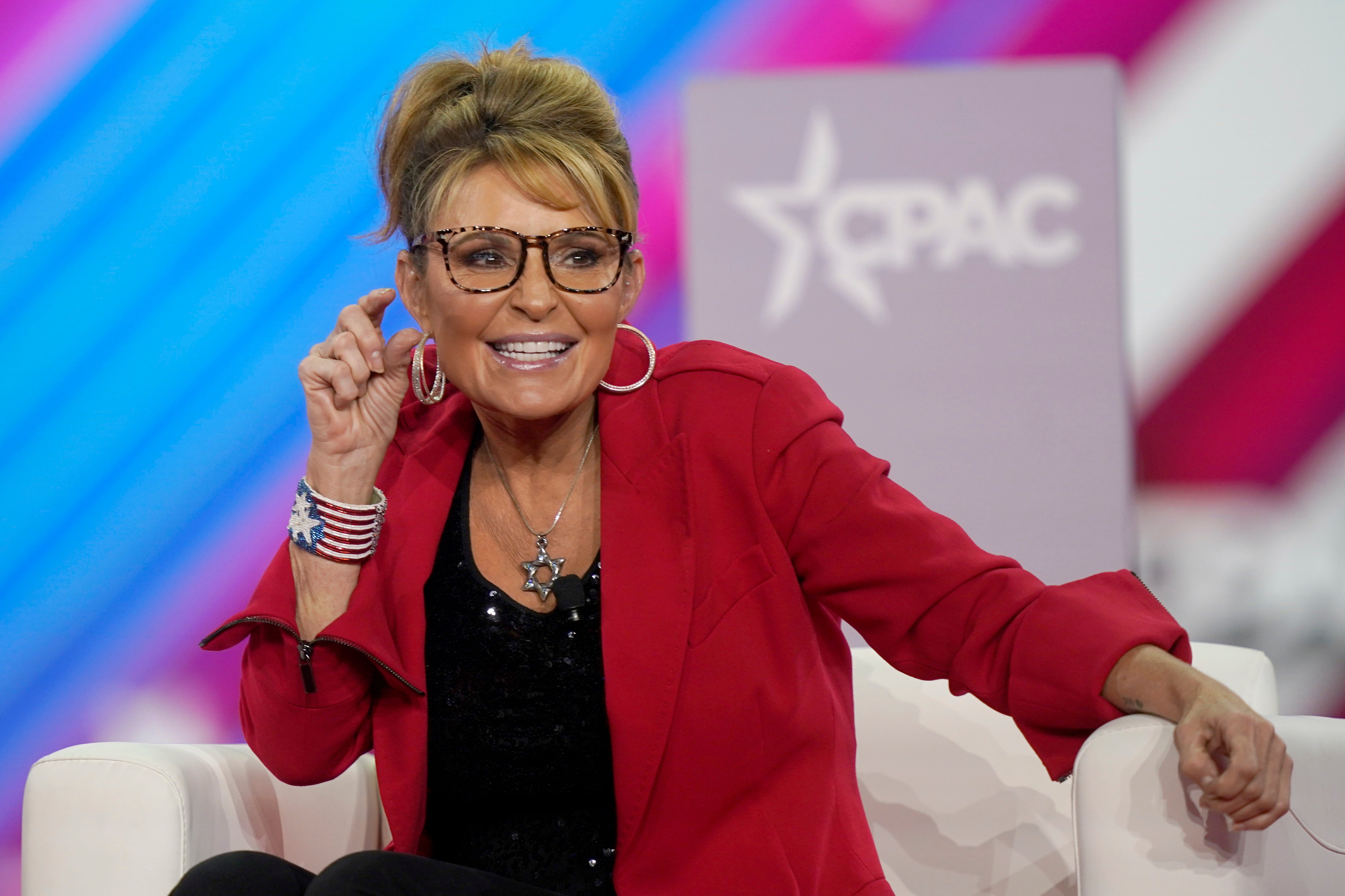Sarah Palin was Trump before Trump — except she’s way more qualified for office
Given her experience in government, it’s fair to say that if Palin makes it to Washington DC she might occasionally wonder whether she deserves better than her incompetent and feckless Republican colleagues


Your support helps us to tell the story
From reproductive rights to climate change to Big Tech, The Independent is on the ground when the story is developing. Whether it's investigating the financials of Elon Musk's pro-Trump PAC or producing our latest documentary, 'The A Word', which shines a light on the American women fighting for reproductive rights, we know how important it is to parse out the facts from the messaging.
At such a critical moment in US history, we need reporters on the ground. Your donation allows us to keep sending journalists to speak to both sides of the story.
The Independent is trusted by Americans across the entire political spectrum. And unlike many other quality news outlets, we choose not to lock Americans out of our reporting and analysis with paywalls. We believe quality journalism should be available to everyone, paid for by those who can afford it.
Your support makes all the difference.In 2008, Sarah Palin, Governor of Alaska and Republican vice-presidential candidate, claimed in an interview with Katie Couric of CBS that she had foreign policy experience because Alaska was “just right over the border” with Russia. In the same interview, when asked what publications she read to keep informed about the world, she seemed unable to name a single one.
Palin’s infamous Couric interview seems today like a prophecy of the Trump era in which ridiculous, unprepared, ignorant Republican candidates are the norm. And it’s true that Palin, as a post-policy reality television star and rabid culture warrior, is in many ways the grandmother of Trumpism. It makes sense that she’s returned to electoral politics after Trump’s presidency, running for the at-large Alaska House seat to replace longtime representative Don Young, who died in March.
Palin’s return, though, is also a measure of decline. For all her faults, she actually has a lot more governing experience and many more conventional qualifications than many other Republican candidates running for higher-profile offices. Palin shows that the Republican party has long been broken — and that it has only become more so.
In 2008, John McCain’s Republican presidential campaign was struggling in the polls against Barack Obama. In a desperate effort to change the narrative, McCain selected Palin as his vice-presidential running mate. She was the first woman to run on a Republican presidential ticket; she was young at 44. And she was seen as an authentic, unfiltered conservative.
Palin’s interview with Katie Couric made her a laughingstock and damaged her in the polls; it made it clear she wasn’t a savior for McCain, but a liability. Nevertheless, it also established her anti-establishment bona fides.
Being ridiculed by the mainstream media and criticized by mainstream politicians made Palin the perfect voice for Republicans who hated CBS and McCain almost as much as they loathed Democrats. After the election loss, she resigned as Governor of Alaska to focus full-time on grievance populism and cultivating her own brand. Why try to be John McCain when being Rush Limbaugh was more fun and more lucrative?
Palin wasn’t as influential as Limbaugh, but she did pretty well for herself. She coined the phrase “death panel” in a rabid Facebook post in opposition to the 2009 Affordable Care Act. That inaugurated the conspiracy theory that, under the new health care proposal, government bureaucrats were going to sentence people to death for being insufficiently productive. (Limbaugh himself cosigned the lie.)
In March 2010, Palin’s political action committee circulated a map of Democratic elected officials to target; the map used gun crosshairs to mark their districts. One of those Democrats, Gaby Giffords, was shot in the head in 2011. There wasn’t any connection between the map and the assassination attempt. But the backlash against Palin highlighted the growing use of violent imagery and rhetoric on the right — which culminated in the January 6 coup and recent far-right assaults on the FBI.
Red-meat, right-wing warrior Palin has coexisted alongside anodyne, television-ready Palin. She and daughter Bristol have appeared in a series of more-or-less popular reality television shows. Before Trump translated reality TV success into political power, Palin had already merged those two image-obsessed worlds.
And it’s not just Trump. The GOP now has a slew of candidates who follow the Palin blueprint, mixing celebrity name recognition, policy ignorance, and openly misleading, irresponsible and violent right-wing rhetoric.
Herschell Walker, the Republican Senate candidate in Georgia, is a former football player who has argued that fighting climate change is pointless because we cannot control China’s “bad air.” Mehmet Oz, the GOP Senate candidate in Pennsylvania, is famous for peddling quack cures on televison; he just released a widely mocked video in which he shops at a Wegman’s grocery store, misnaming it “Wegners”. J.D. Vance, running for Senate in Ohio, is a memoirist and hedge-fund manager who has started spouting far-right “replacement theory” rhetoric on the campaign trail.
Walker, Oz, Vance, and Trump himself all reproduce a Palin-like mix of ignorance, radicalism, and bluster. But they also are all a lot less qualified than Palin was when she ran for national office.
Palin’s heirs cheerfully present themselves to voters without any record of public service at all. But Palin started her career in 1992, when she won a seat on the Wasilla City Council — a very local office. She then moved on to become Mayor of Wasilla in 1996. After serving for two terms, she was appointed to the Alaska Oil and Gas Commission in 2003, where she pursued a successful anti-corruption agenda. She was elected Governor of Alaska in 2006.
Compared to Senatorial candidates like Oz, Walker, and Vance, or hedge-fund Peter Thiel acolyte Blake Masters in Arizona, Palin seems positively over-qualified to run for a House seat. It’s almost like, in the current anti-competence GOP, Palin had to leave office for 14 years so people could forget her background. Otherwise, Republican primary voters might think she had too much experience to represent them.
There’s no guarantee that Palin will win the special election. It’s a complicated contest with candidates from both parties running against each other using Alaska’s new ranked-voting system. And Palin and Republican Nick Begich III have focused on attacking each other rather than Democratic candidate Mary Peltola.
If Palin does end up in Washington, though, she’ll serve alongside many clownish Republicans she inspired. There’s Representative Marjorie Taylor Greene, who’s babbled about Jewish space lasers. There’s Senator Josh Hawley, who cheered on the January 6 rioters then ran away from them in an embarrassing panic. Palin will feel at home.
She might also, though, given her experience in government, occasionally wonder whether she deserves better than her incompetent and feckless colleagues. Palin accelerated the GOP race to the bottom, but like all those who participate, she was always doomed to be left behind. That’s what happens when your party has only one principle; you can never sink too low.
Join our commenting forum
Join thought-provoking conversations, follow other Independent readers and see their replies
Comments